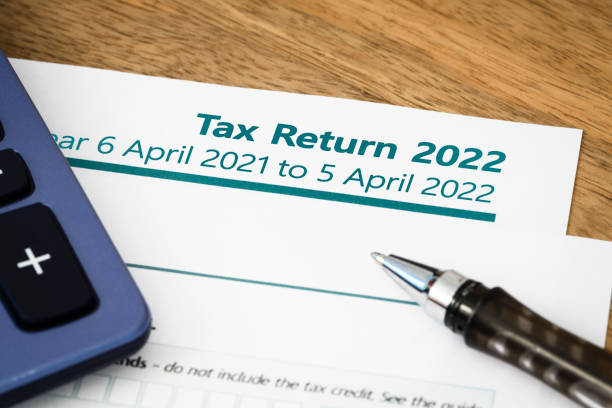
How does a Double Taxation Avoidance Agreement (DTAA) help NRIs/OCIs/PIOs?
Double taxation occurs when you are taxed on the same income in two different countries, one where you earn the income (known as the source country) and the other where you are a tax resident (known as the resident country).
India has signed comprehensive DTAAs with more than 90* countries to help Non-Resident Indians (NRIs) avoid being doubly taxed. This list includes countries such as Australia, Canada, France, Germany, Hong Kong, Portugal, Singapore, UAE, USA, UK and many others. Under these agreements, your income and remittances are subject to tax and benefits as per the DTAA with your resident country.
DTAA helps ensure that NRIs/Persons of Indian Origin (PIO)/Overseas Citizens of India (OCI) don't face excessive international tax burdens or cash outflows due to the same income being taxed in multiple jurisdictions. Let's explore the different methods available to claim these benefits.
- Foreign Tax Credit (FTC): The resident country may allow you to claim a credit for the taxes you’ve already paid in the source country as per the applicable tax laws of the resident country. Individuals who qualify as Indian residents, can claim credit in India for foreign taxes paid in the source country by filing Form 67 with the income tax department.
- Exemption method: Through exemption of income in one country, certain types of income may be entirely exempt from taxation. This would depend based on the clauses of the respective DTAA between the two countries.
- Reduced rate of tax: You can pay taxes at a reduced rate as compared to the normal rate as per the Income Tax Act, 1961. For example, if you are a tax resident of the United States (U.S.), under DTAA you can claim a concessional rate of tax, e.g., 15% on the interest earned in India.
Additionally, you can also use a combination of the three alternatives mentioned below. Let’s understand the types of double taxation and exemptions in detail.
Please note, tables are best viewed on desktops or in landscape mode on mobile phones.
| Foreign Tax Credit (FTC) | Exemption method | Reduced rate of tax/special rates |
|---|---|---|
Claimable in resident country |
Taxable in one country |
Taxable in one country at a special tax rate |
The resident country will allow a tax deduction from the taxes paid in the source country. |
The income is taxable in the resident country and exempted in the source country. |
The income is taxed in one country at special tax rates. |
For example- Rahul, a PIO, is a US citizen who has permanently relocated to India (his resident country). He has a total taxable income of ₹75,00,000 of which income from capital gains is ₹5,00,000 from his investments in shares in the US market (source country). He has to pay US federal income tax of ₹1,00,000 (assumed) on such capital gain. As per Indian Income Tax Act, 1961 on long term capital gains on equity in a foreign country, he is liable to pay income tax at 22.88% (20% tax+ 10% surcharge + 4% education cess on tax and surcharge). Accordingly, he will have to pay a long term capital gain tax in India of ₹1,14,400. Rahul is eligible to claim the FTC in respect of US federal tax of ₹1,00,000. Therefore, Rahul will pay only the Indian tax of ₹14,400 as taxes in India. |
For example- Rohan, an Indian national, is deputed by an Indian MNC to work in the US for three years. Therefore, he becomes a US tax resident and an NRI in India. During the deputation period, he received a salary in India of ₹50,00,000 for the services provided in USA. As the salary is received in India, It will be taxable in India under the Indian Income Tax Act, 1961. Rohan can claim a full exemption from Indian income tax in respect of his total salary of ₹50,00,000 under the Article 16(1) 'Dependent Personal Services' category, of the India-US DTAA. However, Rohan is required to pay income tax in USA at the applicable rates. In DTAAs with different countries, there are different exemptions available for different income sources such as capital gain on sale of securities, income from immovable property, business profits in absence of permanent establishment, etc. The NRIs/OCIs/PIOs should familiarise themselves with various aspects of the applicable DTAAs. |
For example- Smriti is a Canada-based NRI and has an NRO savings account in India. She is a tax resident of Canada under DTAA. Smriti has earned ₹25,00,000 interest in India in a year and TDS of ₹7,80,000 has been deducted @ 31.20%. Under the Indian Income Tax Act, 1961, she is liable to pay a tax of ₹4,68,000 as per the applicable tax slabs. However, under the India-Canada DTAA, she is eligible to apply for a special tax rate of 15%** on the savings bank interest income earned in India (source country) while filing her tax return in India. Hence, she can claim a refund of 16.2% (31.2% of TDS minus 15% of the special rate) while filling her Income Tax Return (ITR) in India. She can claim a foreign tax credit of the Indian taxes paid in Canada as per the tax return filed in India against her Canadian income tax. |
Claiming DTAA benefits can be a bit complex. The above examples are for illustrative purposes only. Please refer to a tax expert in India for advice. If you have queries around international taxation, get in touch with a tax expert in your country of residence.
DTAA rates for NRIs
To know the agreed DTAA rates between India and your country of residence you can refer to the Indian Income Tax portal
Steps to claim benefits under DTAA
- Ascertain your residential status under DTAA
To claim DTAA relief in India, you must first ascertain your residential status under the 'Residence' Article of DTAA. - Obtain a Tax Residency Certificate (TRC)
You must also mandatorily obtain a TRC from the country in which you are a resident. It serves as proof to verify your residential status. While filing your Income Tax Return (ITR) in India as a non-resident, you must disclose whether you have obtained a TRC or not in the ITR form. For instance, if you are a tax resident of the US, you can claim relief in India under the India-US DTAA subject to obtaining a Tax Residency Certificate (TRC) from the US revenue authorities, electronically filed declaration in Form 10F, etc. - Understand the benefits which can be claimed in India
It is expected that NRIs will have multiple sources of income in India and overseas such as capital gains (short-term and long-term both from equity and fixed income), rental income, bank interest, sale of property and many other sources. You should familiarise yourselves with the suitable clauses and submit the relevant documents to claim the required benefits (FTC, exemption, income taxed at special rates as detailed in the above illustrations) under DTAA. It is advisable to seek guidance from a qualified tax professional to explore these benefits.





